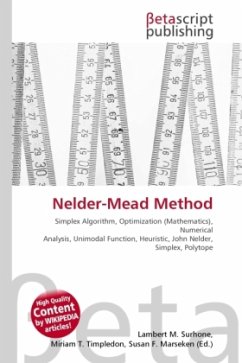
Permutohedron
Versandkostenfrei!
Versandfertig in 6-10 Tagen
23,99 €
inkl. MwSt.

PAYBACK Punkte
12 °P sammeln!
Please note that the content of this book primarily consists of articles available from Wikipedia or other free sources online. According to Ziegler (1995), permutohedra were first studied by Schoute (1911). The name "permutohedron" (or rather its French version, "permutoèdre") was coined by Guibaud & Rosenstiehl (1963). Regarding this coinage, they write that the word "permutohedron" is barbaric, but easy to remember, and that they submit it to the criticism of their readers. The alternative spelling permutahedron is sometimes also used. Permutohedra are sometimes also called permutation pol...
Please note that the content of this book primarily consists of articles available from Wikipedia or other free sources online. According to Ziegler (1995), permutohedra were first studied by Schoute (1911). The name "permutohedron" (or rather its French version, "permutoèdre") was coined by Guibaud & Rosenstiehl (1963). Regarding this coinage, they write that the word "permutohedron" is barbaric, but easy to remember, and that they submit it to the criticism of their readers. The alternative spelling permutahedron is sometimes also used. Permutohedra are sometimes also called permutation polytopes, but this terminology is also used for a related polytope, the Birkhoff polytope, defined as the convex hull of permutation matrices. More generally, Bowman (1972) uses the phrase "permutation polytope" for any polytope whose vertices are in 1-1 correspondence with the permutations of some set.












